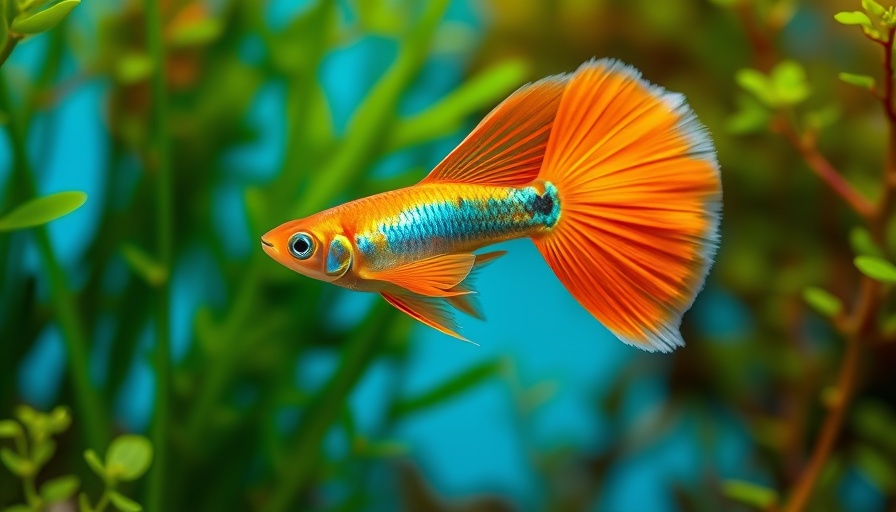
Understanding the Attraction of Orange in Guppies
In a world where the subtle interplay of genetics and appearance often fascinate researchers, one study has illuminated an unusual connection: the bright orange hues of male guppies and their link to sexual virility. The University of British Columbia's recent findings provoke intriguing questions about evolution, mate selection, and genetic health within this vibrant species. As it turns out, the flashier the color, the more appealing it is not only to potential mates but also as an indicator of overall fitness and capability.
How Color Influences Behavior in Guppies
Through a combination of deep learning techniques and genetic studies, researchers at UBC discovered that male guppies with more vivid orange colors exhibited up to two times greater sexual activity. They performed elaborate courtship dances longer and with more frequency, effectively presenting themselves as preferable partners. This connection highlights a critical aspect of sexual selection in nature: bright coloration is not just a superficial trait—it signifies underlying health, vitality, and adaptive advantages.
The Genetic Basis Behind Bright Colors
The study documented an astonishing discovery: the genes responsible for coloration are associated with the same cells that contribute to brain formation. Scientists identified multiple genes tied to both color expression and behavioral traits in guppies, making a compelling case that attractiveness and fitness are intertwined. Dr. Judith Mank stated, "Previously, people thought maybe males realized that if they were more orange, they were more sexy. With the genetic link, it may be that they're healthier and fitter." This finding implies that the flashiness of their appearance serves a practical purpose in nature beyond aesthetics.
The Broader Implications of Genetic Diversity
In a world facing challenges like climate change, understanding the mechanisms behind genetic variation in species like guppies offers valuable insights. The vast genetic architecture exhibited by these fish—potentially leading to 32,768 unique patterns—exemplifies how extensive biodiversity contributes to resilience in populations. The researchers argue that exploring colorful traits can shed light on how various animal species adapt and thrive.
Connecting Female Choice to Evolutionary Strategies
Female guppies’ preference for vibrant males is a significant factor that drives the evolution of color diversity within populations. This phenomenon exemplifies female choice as a critical driver of genetic evolution. By favoriting males with vivid colors, females indirectly select for increased male fitness. This evolutionary scenario calls into question long-standing views on mate selection and indicates that choices made by females directly shape male behaviors and traits over generations.
Conclusion: The Colorful Future of Guppy Research
This study not only deepens our understanding of guppy biology but also invokes curiosity about the evolutionary processes shaping attraction across species. As researchers continue to unravel the complex relationship between genetics and behavioral traits, the findings present multifaceted implications for conservation efforts, ecological studies, and the understanding of evolutionary strategies. In bridging colors of nature with their behavioral consequences, it is clear that sometimes, brighter hues truly boast a deeper meaning.
As you explore the vibrant lives of these fascinating fish, consider how such principles of mate selection and genetic health may mirror aspects of human relationships and societal standards. A continuous dialogue on these evolutionary lessons can enrich our perspectives on beauty, attraction, and the inherent values we associate with them.
 Add Element
Add Element  Add Row
Add Row 



Write A Comment